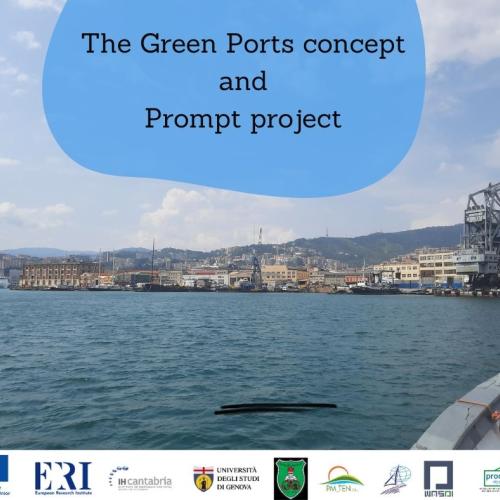
The Green Ports Concept and PROMPT
Green ports refer to seaports or harbors that prioritize environmental sustainability and adopt practices to minimize their ecological footprint.

Green ports refer to seaports or harbors that prioritize environmental sustainability and adopt practices to minimize their ecological footprint. These practices often involve reducing air and water pollution, optimizing energy efficiency, and promoting the use of renewable energy sources
Green ports focus on reducing emissions from various sources within the port area. This involves implementing measures to decrease air pollution from ships, trucks, and other vehicles, as well as from stationary sources like power plants.
Ports consume a significant amount of energy for various operations, such as loading and unloading cargo, managing container terminals, and providing vessel facilities. Green ports adopt energy-efficient technologies, explore the use of renewable energy sources, and implement smart energy management systems to reduce overall energy consumption.
Effective waste management is a crucial aspect of green ports. This includes proper disposal and recycling of waste generated within the port, as well as measures to prevent pollution of water bodies.
Some green port initiatives include measures to protect local biodiversity and habitats. Ports may implement strategies to minimize disruption to nearby ecosystems and wildlife.
Green ports adhere to environmental regulations and standards set by local authorities and international bodies. Compliance ensures that port activities are conducted in a manner that meets or exceeds environmental requirements.
Green ports often engage with local communities to address concerns and ensure that the port's activities are conducted in a socially responsible manner. This may involve dialogue on issues such as noise pollution, traffic management, and community well-being.
Green ports embrace technological advancements that contribute to environmental sustainability. This may include using electric vehicles, shore power for docked vessels, and implementing digital technologies for efficient logistics and operations.
The European Union has been at the forefront of promoting sustainability in various sectors, including transportation and maritime activities. EU policies and directives aim to address environmental challenges, reduce emissions, and promote sustainable development. The concept of green ports aligns with broader EU goals for a greener and more sustainable future.
PROMPT’s contribution to the green ports concept stemmed from combatting the threats to the marine ecosystem such as chemical pollution ie spills of oil and HNS substance caused by ports transportation activities. PROMPT is designed to mainly enhance the detection of spills of oil, hazardous and noxious substances (HNS) marine pollution through the use of an information communication tool called Environmental Decision Support System (EDSS) and tracking floating containers. Thanks to PROMPT, the protection of local biodiversity and habitats will be significantly enhanced.
In conclusion, Green ports symbolize a paradigm shift in the maritime industry, demonstrating that economic growth and environmental responsibility can coexist. As the world faces the challenges of climate change, the concept of green ports serves as a beacon, guiding the industry toward a more sustainable and resilient future. Through innovative technologies, community engagement, and a commitment to regulatory compliance, green ports are navigating the waters of change, setting sail toward a cleaner, greener, and more sustainable maritime landscape. PROMPT’s intervention is tailored to reducing marine pollution in the EU and neighboring Mediterranean seas to safeguard the local biodiversity and habitats

Preparedness for Operational Monitoring and Prediction of contaminant Transport in the Sea
Sectors
Thematic series